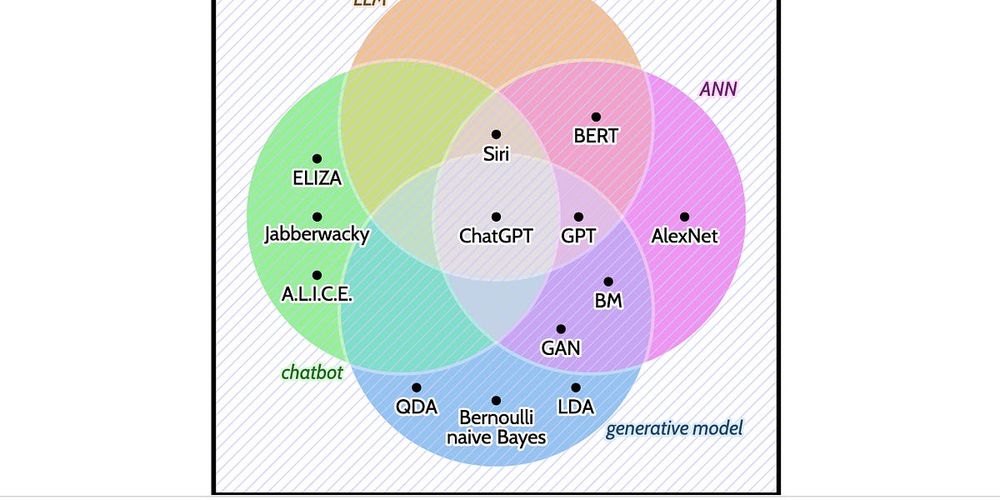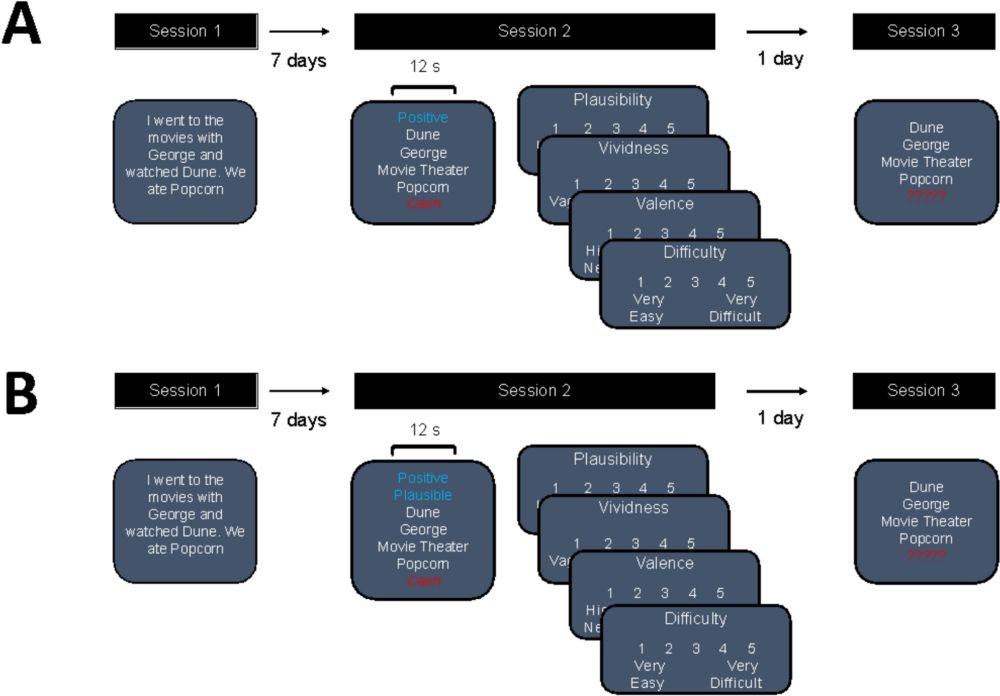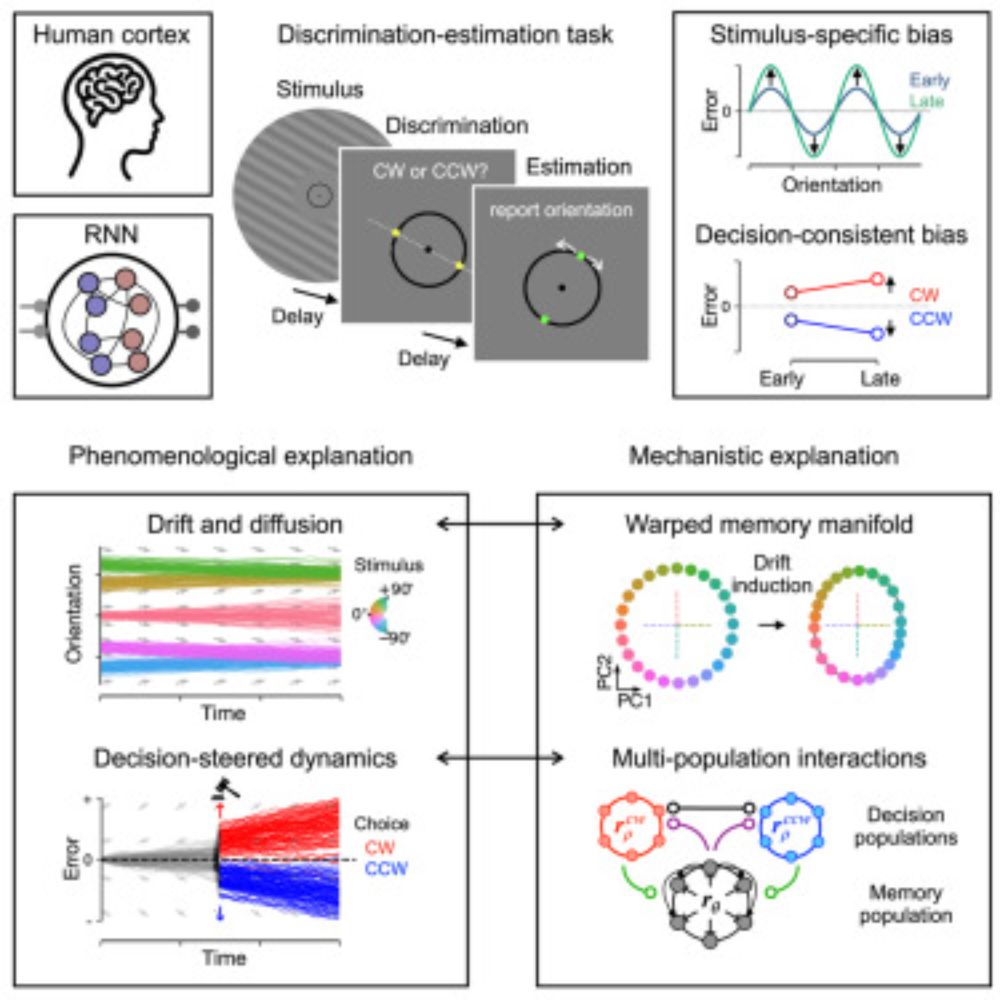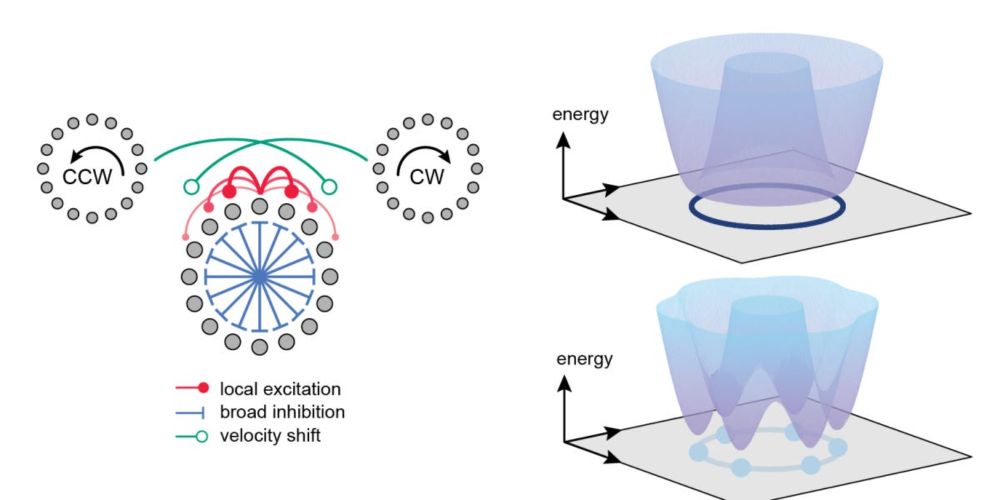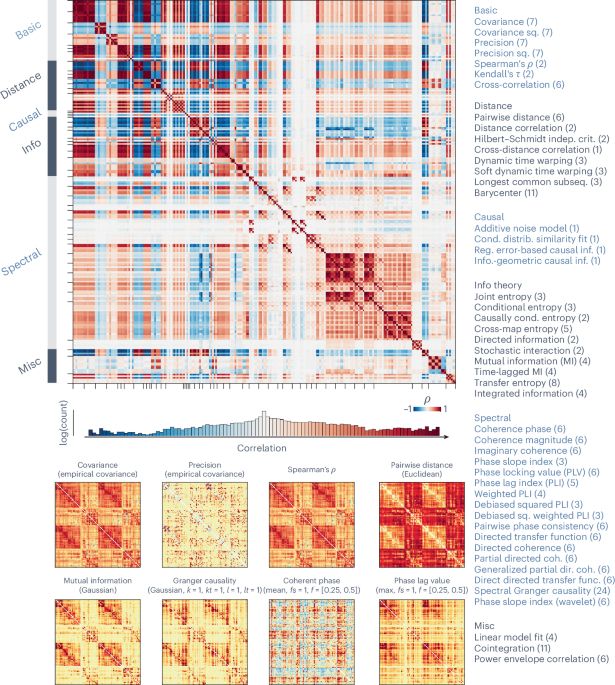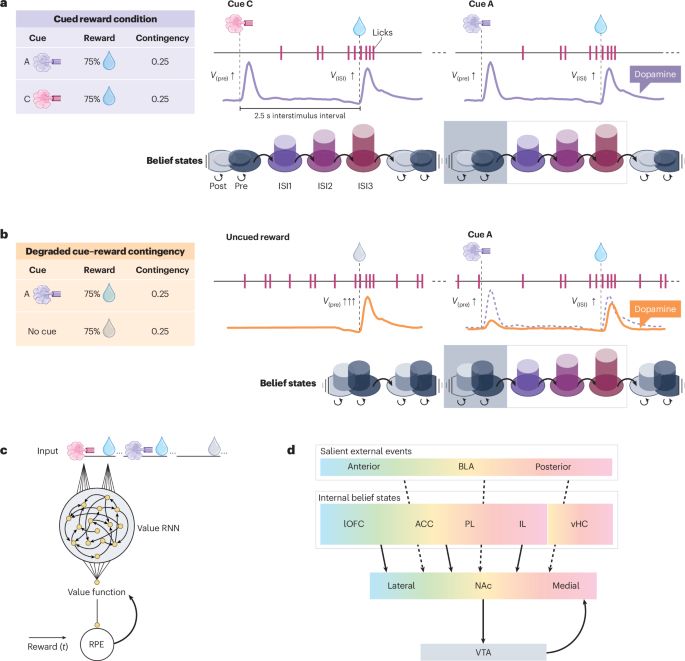I’m super excited to finally put my recent work with @behrenstimb.bsky.social on bioRxiv, where we develop a new mechanistic theory of how PFC structures adaptive behaviour using attractor dynamics in space and time!
www.biorxiv.org/content/10.1...
24.09.2025 09:52 — 👍 204 🔁 85 💬 9 📌 8

We present our new preprint titled "Large Language Model Hacking: Quantifying the Hidden Risks of Using LLMs for Text Annotation".
We quantify LLM hacking risk through systematic replication of 37 diverse computational social science annotation tasks.
For these tasks, we use a combined set of 2,361 realistic hypotheses that researchers might test using these annotations.
Then, we collect 13 million LLM annotations across plausible LLM configurations.
These annotations feed into 1.4 million regressions testing the hypotheses.
For a hypothesis with no true effect (ground truth $p > 0.05$), different LLM configurations yield conflicting conclusions.
Checkmarks indicate correct statistical conclusions matching ground truth; crosses indicate LLM hacking -- incorrect conclusions due to annotation errors.
Across all experiments, LLM hacking occurs in 31-50\% of cases even with highly capable models.
Since minor configuration changes can flip scientific conclusions, from correct to incorrect, LLM hacking can be exploited to present anything as statistically significant.
🚨 New paper alert 🚨 Using LLMs as data annotators, you can produce any scientific result you want. We call this **LLM Hacking**.
Paper: arxiv.org/pdf/2509.08825
12.09.2025 10:33 — 👍 259 🔁 94 💬 5 📌 19

Our new lab for Human & Machine Intelligence is officially open at Princeton University!
Consider applying for a PhD or Postdoc position, either through Computer Science or Psychology. You can register interest on our new website lake-lab.github.io (1/2)
08.09.2025 13:59 — 👍 50 🔁 15 💬 2 📌 0
Key-value memory network can learn to represent event memories by their causal relations to support event cognition!
Congrats to @hayoungsong.bsky.social on this exciting paper! So fun to be involved!
05.09.2025 13:07 — 👍 13 🔁 2 💬 0 📌 0
Our new study (Titled: Memory Loves Company) asks whether working memory hold more when objects belong together.
And yes, when everyday objects are paired meaningfully (Bow-Arrow), people remember them better than when they’re unrelated (Glass-Arrow). (mini thread)
28.08.2025 12:07 — 👍 69 🔁 15 💬 5 📌 0
Now out in print at @jephpp.bsky.social ! doi.org/10.1037/xhp0...
Yu, X., Thakurdesai, S. P., & Xie, W. (2025). Associating everything with everything else, all at once: Semantic associations facilitate visual working memory formation for real-world objects. JEP:HPP.
27.06.2025 01:24 — 👍 13 🔁 2 💬 0 📌 1
Successful prediction of the future enhances encoding of the present.
I am so delighted that this work found a wonderful home at Open Mind. The peer review journey was a rollercoaster but it *greatly* improved the paper.
direct.mit.edu/opmi/article...
09.08.2025 16:27 — 👍 77 🔁 22 💬 2 📌 2
Congrats again! Cody!!
28.07.2025 12:29 — 👍 1 🔁 0 💬 1 📌 0
Take a look if you are interested in the differences between LLM memory-augmentation vs human episodic memory!
And let us know if you have any feedback!
28.07.2025 12:27 — 👍 6 🔁 0 💬 0 📌 0
We put out this preprint a couple months ago, but I really wanted to replicate our findings before we went to publication.
At first, what we found was very confusing!
But when we dug in, it revealed a fascinating neural strategy for how we switch between tasks
doi.org/10.1101/2024.09.29.615736
🧵
27.07.2025 21:31 — 👍 84 🔁 24 💬 2 📌 1
@nichols.bsky.social collaborated with researchers at the National University of Singapore on a recent study published in @nature.com on how longer duration fMRI brain scans reduce costs and improve prediction accuracy for AI models. Read more about the study below 👇
22.07.2025 15:47 — 👍 6 🔁 3 💬 0 📌 0
Fantastic work by our (now former) lab manager Liv Christiano. We assess the test-retest reliability of OPM and compare it to fMRI and iEEG. 🧠📄🧵
19.07.2025 16:48 — 👍 28 🔁 8 💬 0 📌 1

A gradient of complementary learning systems emerges through meta-learning
Long-term learning and memory in the primate brain rely on a series of hierarchically organized subsystems extending from early sensory neocortical areas to the hippocampus. The components differ in t...
Excited to share a new preprint w/ @annaschapiro.bsky.social! Why are there gradients of plasticity and sparsity along the neocortex–hippocampus hierarchy? We show that brain-like organization of these properties emerges in ANNs that meta-learn layer-wise plasticity and sparsity. bit.ly/4kB1yg5
16.07.2025 16:15 — 👍 63 🔁 24 💬 0 📌 3
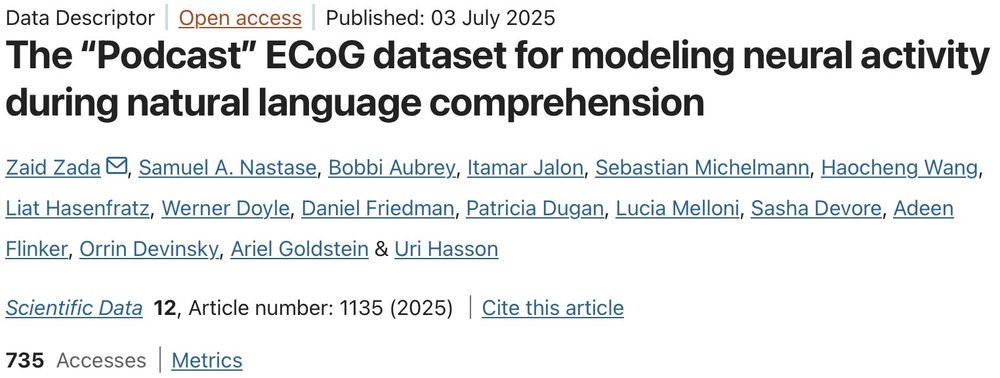
Check out Zaid's open "Podcast" ECoG dataset for natural language comprehension (w/ Hasson Lab). The paper is now out at Scientific Data (nature.com/articles/s41...) and the data are available on OpenNeuro (openneuro.org/datasets/ds0...).
07.07.2025 21:00 — 👍 40 🔁 17 💬 1 📌 0
Didn't see one for Neuroscience yet; allow me to oblige
18.11.2024 11:03 — 👍 177 🔁 45 💬 6 📌 5
Academic Associate and PhD student at York St John University interested in learning and memory in the verbal domain.
Assistant Professor @ CityUHK | Loot Boxes; Video Game Law 🎮🎰 | Empirical Legal & Policy Research | Pro Screenshotter 📱📸 | leonxiao.com
Computational neuroscientist || Postdoc with Tim Behrens || Sainsbury Wellcome Centre @ UCL
Incoming postdoc at Columbia/NYU. Sponsored by New York Academy of Sciences through Leon Levy Foundation. PhD from Princeton University, Yale '19
Grad student studying cognition and the brain 🧠
@ the University of Chicago Psychology
Interested in how we pay attention and learn
Postdoc @ UCL studying causal judgment, counterfactual thinking, and metacognition
https://kevingoneill.github.io
human
mom of two
developmental cognitive scientist @Rutgers
co-Host @theitsinnatepc.bsky.social
more info https://sites.rutgers.edu/jinjing-jenny-wang/
Ph.D. student at Stanford. Interested in how the brain makes sense of the world.
PhD student @yale.edu
Interested in the neural basis of attention & memory 🧠
We're a neuroscience blog trying to make neuroscience accessible for everyone! Check it out here: https://neurofrontiers.blog
Interested in understanding the neural mechanisms underlying music cognition via neuroimaging and computational modeling
Neuroscience PhD from Princeton
Neuroscience Postdoc at MIT
https://scholar.google.co.uk/citations?user=RjmK2NgAAAAJ&hl=en
PhD student @SainsburyWellcomeCentre, UCL | comp systems nrosci | dopamine, learning, risky decision-making🐀🧠💻
PhD Student @FU_Berlin co-supervised by Prof. Radoslaw M. Cichy and Prof. Tim Kietzmann, interested in machine learning and cognitive science.
studying cognitive dynamics and how the brain computes | postdoc-ing at WashU CTCN
https://hyssong.github.io/
Psychologist study social cognition, stereotypes, individual & structural, computational principles. Assistant Prof @UChicago
Postdoc at the Princeton Neuroscience Institute.
Planning in complex environments, RL and network science.
https://www.aekahn.com





